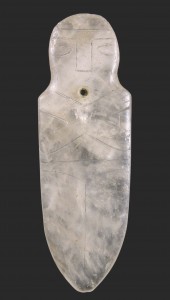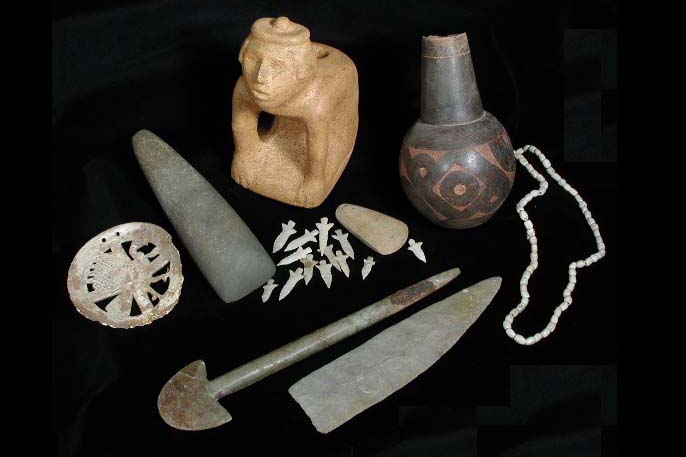Many Texans know the Caddo Tribe gave the state its name—Tejas is the Spanish spelling of the Caddo word taysha, which means friend or ally. But did you know that The University of Texas at Austin’s Texas Archeological Research Lab (TARL) safeguards one of the most extensive Caddo collections in the world?
“The records and collections of the Texas Archeological Research Laboratory that concern the native history of the Caddo Indian peoples are unparalleled,” says Timothy Perttula, a TARL research affiliate and tribal archeological consultant for the Caddo Nation. “These materials provide in-depth archeological and historical information for archeologists as well as members of the Caddo Nation of Oklahoma on the cultural heritage of the Caddo peoples.”

The collection spans a period from at least 2500 years ago to the mid-1800s, when the last of the Caddo were moved out of Texas and brought to Oklahoma. Some collection highlights include ceremonial objects, weaponry, and an extraordinary pendant of quartz crystal with a human figure carved on one face.
“A most fascinating object is a nearly 20-inch-long chipped-stone blade,” says TARL archeologist Susan Dial. “The size and fine craftsmanship indicate it was likely carried by an important leader, for show rather than for use.”
Marybeth Tomka, head of collections at TARL, says the collection includes more than 3,000 ceramic containers primarily used in rituals. They range from effigy vessels featuring birds, beavers and deer to finely engraved bottles and bowls.
“Many of these vessels were donated to TARL, but a large quantity were also derived from large scale WPA-era excavations,” Tomka says.
In addition to the vessel collection, Tomka says TARL maintains a collection of ceremonial ground stone items that once served as symbols of office in the Caddoan society. Most of the items, however, were used for everyday activities such as hunting, agriculture, cooking and hide preparation for clothes and containers.
“The breadth and diversity of these collections illustrate the lifeways of the ancestral Caddo peoples—from the archeology of their small farming communities to mound construction and political/religious rituals and ceremonies at their major civic-ceremonial centers in East Texas,” Perttula says.
Learn more about the Caddo people from TARL’s online exhibits: Tejas: the Life and Times of the Caddo Indians, which provide an intimate look at the Caddo’s long and distinguished history, ancient and living Caddo traditions, and at the tribe’s many contributions to the cultural heritage of Texas, Louisiana, Arkansas and Oklahoma. Explore teaching resources for K-12, an interactive map and Caddo Voices told by Caddo elders.
Feature image: Artifacts illustrating the remarkable diversity and time depth of Caddo items in the TARL Collections. Shown (clockwise) are a carved marine shell gorget; a rare spatulate celt of green metamorphic silicate; a clay effigy pipe with human features; a Holly Fine Engraved bottle; chipped-stone arrow points; a string of shell beads; a polished stone staff of office; and an extraordinarily long (48 cm) and thin chipped-stone blade, or sword, likely made for a Caddo leader. The pottery vessel is from an Early Caddo tomb at the George C. Davis site, Cherokee County, Texas, dating to ca. A.D. 1000.
